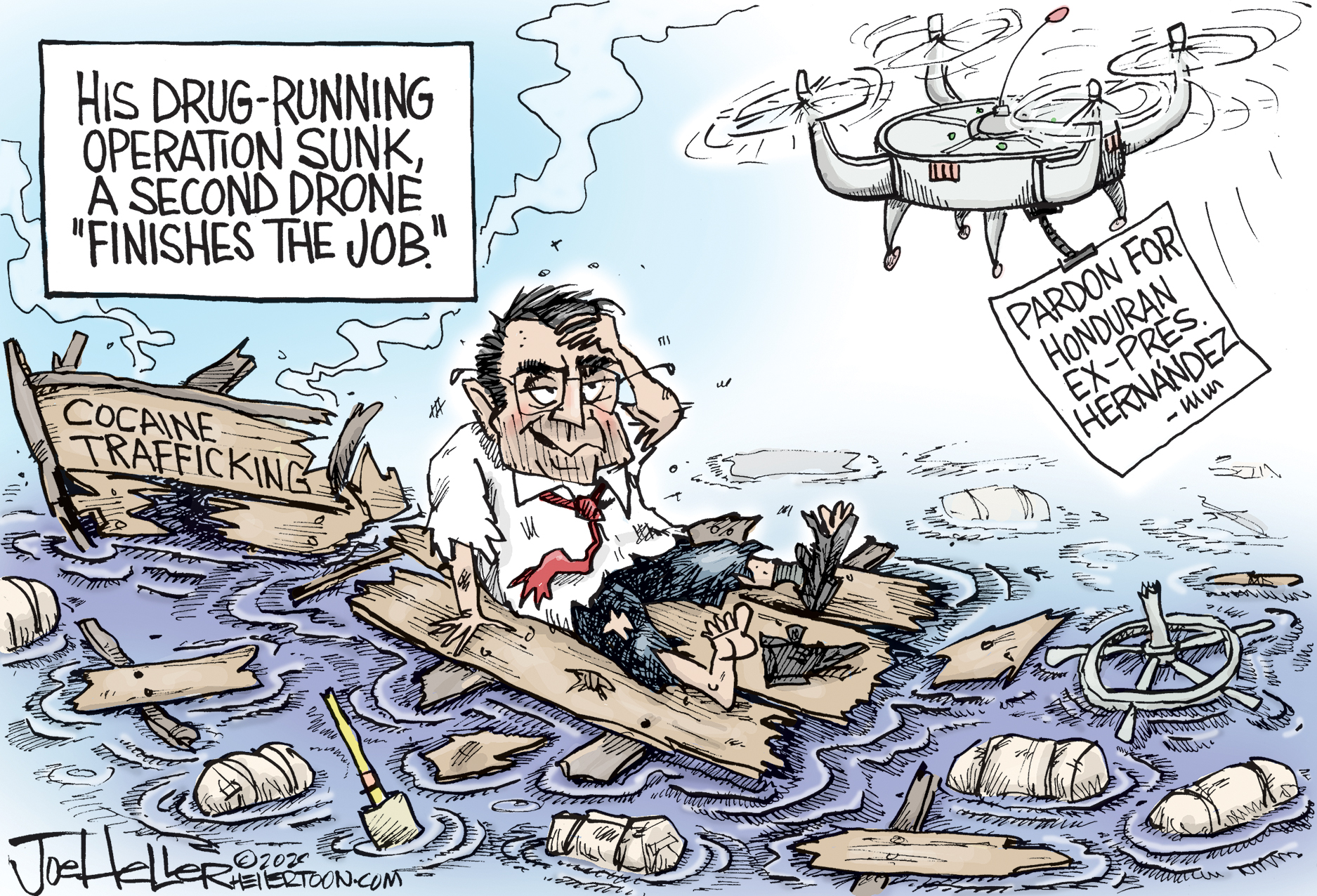What to expect from the nationwide emergency alert system test
The US government is testing the system's abilities with an alert to all cell phones, TVs and radio stations


Everybody remain calm; it's just a test! This Wednesday, Oct. 4, the United States Federal Emergency Management Agency (FEMA) and the Federal Communications Commission (FCC) will send notifications to mobile phones, televisions, and radio stations nationwide to test the country's national emergency alert systems. Americans should prepare to hear their devices "blare out the distinctive, jarring electronic warning tone of an emergency alert," USA Today reported. The government typically uses the alert to signal a nationwide threat or natural disaster. Still, this is just a part of your normally scheduled programming, folks, and the agencies behind the test say there's no need for concern.
What should you expect?
There are two components to the test that will run simultaneously: a test of the Emergency Alert System and a test of Wireless Emergency Alerts, according to FEMA. The EAS will notify all radio and television broadcasters, cable providers, and satellite radio stations. The WEA will be directed to all consumer cell phones. The tests will begin around 2:20 p.m. ET and 11:20 a.m. PT on Oct. 4.
The WEA will be distributed using FEMA’s Integrated Public Alert and Warning System (IPAWS), a "centralized internet-based system" that allows FEMA to send "authenticated emergency messages to the public through multiple communications networks." Cell towers will broadcast the emergency alert for 30 minutes. If your phone is turned on in the range of a tower, your phone will display a message that says: "THIS IS A TEST of the National Wireless Emergency Alert System. No action is needed." The emergency alert message will be shared in both English and Spanish based on your phone's language settings. The alert will be "accompanied by a unique tone and vibration" so that the alert is accessible to everyone, "including people with disabilities," FEMA advised.
The Week
Escape your echo chamber. Get the facts behind the news, plus analysis from multiple perspectives.

Sign up for The Week's Free Newsletters
From our morning news briefing to a weekly Good News Newsletter, get the best of The Week delivered directly to your inbox.
From our morning news briefing to a weekly Good News Newsletter, get the best of The Week delivered directly to your inbox.
The other portion of the test will be sent to TV and radio stations. It will last for one minute with the following message: "This is a nationwide test of the Emergency Alert System, issued by the Federal Emergency Management Agency, covering the United States from 14:20 to 14:50 hours ET. This is only a test. No action is required by the public."
Why does the system need tested?
The national test aims to "ensure that the systems continue to be effective means of warning the public about emergencies," FEMA explained, "particularly those on the national level." In the case of severe weather or other emergencies on Oct. 4, Oct. 11 is set as a backup date.
Since 2015, FEMA has been required by federal law to test the IPWAS at least once every three years. Wednesday's test will be the seventh nationwide test of the Emergency Alert System. "Six previous tests were conducted over the years between November 2011 and August 2021," CBS News reported. This will be the third national test of wireless alerts and the second time the message will be sent to all mobile phones, per FEMA.
The two-pronged national alert system means that agencies can "catch a wide swath of people," which could be invaluable in the case of a national-scale catastrophic event or natural disaster, Joseph Trainor, a faculty member at the University of Delaware's Disaster Research Center, told CBS News. The systems are meant to work together to disseminate information to the right people in as many ways as possible so they can "make good choices about the risks around them," Trainor added. The federal agencies are going to "test the technological limits of the system, to make sure that it's available in that way."
A free daily email with the biggest news stories of the day – and the best features from TheWeek.com
The test is also an opportunity to make sure the public knows that the alarm exists before it has to be used, Jeff Schlegelmilch, the director of the National Center for Disaster Preparedness at Columbia University, told The New York Times. “Speaking generally, alerts are only effective if people know what they are and they know what to do with them,” he said.
Theara Coleman has worked as a staff writer at The Week since September 2022. She frequently writes about technology, education, literature and general news. She was previously a contributing writer and assistant editor at Honeysuckle Magazine, where she covered racial politics and cannabis industry news.
-
 Political cartoons for December 6
Political cartoons for December 6Cartoons Saturday’s political cartoons include a pardon for Hernandez, word of the year, and more
-
 Pakistan: Trump’s ‘favourite field marshal’ takes charge
Pakistan: Trump’s ‘favourite field marshal’ takes chargeIn the Spotlight Asim Munir’s control over all three branches of Pakistan’s military gives him ‘sweeping powers’ – and almost unlimited freedom to use them
-
 Codeword: December 6, 2025
Codeword: December 6, 2025The daily codeword puzzle from The Week
-
 Has Zohran Mamdani shown the Democrats how to win again?
Has Zohran Mamdani shown the Democrats how to win again?Today’s Big Question New York City mayoral election touted as victory for left-wing populists but moderate centrist wins elsewhere present more complex path for Democratic Party
-
 JD Vance wades into choppy religious waters about wife Usha
JD Vance wades into choppy religious waters about wife UshaTHE EXPLAINER By emphasizing his hope that the Second Lady convert to Christianity, the vice president is inviting controversy from across the religious spectrum
-
 Trump wants to exert control over federal architecture
Trump wants to exert control over federal architectureThe Explainer Beyond his ballroom, Trump has several other architectural plans in mind
-
 Millions turn out for anti-Trump ‘No Kings’ rallies
Millions turn out for anti-Trump ‘No Kings’ ralliesSpeed Read An estimated 7 million people participated, 2 million more than at the first ‘No Kings’ protest in June
-
 The new age of book banning
The new age of book banningThe Explainer How America’s culture wars collided with parents and legislators who want to keep their kids away from ‘dangerous’ ideas
-
 Miami Freedom Tower’s MAGA library squeeze
Miami Freedom Tower’s MAGA library squeezeTHE EXPLAINER Plans to place Donald Trump’s presidential library next to an iconic symbol of Florida’s Cuban immigrant community has South Florida divided
-
 Why Trump is so focused on getting a Nobel Peace Prize
Why Trump is so focused on getting a Nobel Peace PrizeThe Explainer A recent poll found that three-quarters of Americans say Trump doesn’t deserve the award
-
 Democrats’ strategy to woo voters for 2026: religion
Democrats’ strategy to woo voters for 2026: religionThe Explainer Politicians like Rob Sand and James Talarico have made a name for themselves pushing their faith
